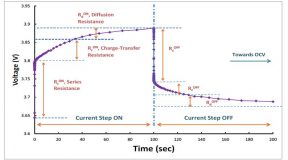George Kerchner, Executive Director
PRBA – The Rechargeable Battery Association
Here’s an intriguing headline that appeared in ClimateProgress: How Scientists, Car Companies, And the Military Are Creating the Smartest Energy Solution on The Market.
What’s the “smartest energy solution?” The answer is: “Lots and lots of batteries.”
The good news is more batteries are on the way. Virtually every battery industry forecast projects dramatic – even exponential – growth in the manufacturing and sales of lithium ion batteries. Analysts foresee a boom in the sales revenues for lithium ion batteries across all sectors, including consumer electronics, electric vehicles (EVs), and the industry’s newest market, energy storage.
Consider just one remarkable statistic. Tesla’s proposed $5 billion gigafactory alone is expected to produce more lithium ion batteries annually than were manufactured worldwide in 2013.
PRBA – The Rechargeable Battery Association welcomes the latest data and the role our members are expected to play in an energy revolution transforming the economy and sustaining the environment. Innovation is driving growth.
The global market for lithium ion batteries is expected to reach $33.1 billion by 2019, with the industry enjoying a compound annual growth rate (CAGR) of 14.4 percent over seven years, according to Research and Markets, an international market research firm based in Ireland.
Now consider the growth of lithium ion batteries for electric vehicles. A recent Navigant Consulting report predicted “worldwide revenue from li-ion batteries for EVs will grow from less than $6 billion in 2014 to more than $26.1 billion in 2023.”
David Alexander, senior research analyst with Navigant Research, said:
“The shift to lithium ion represents a major endorsement of the ability of this chemistry to perform consistently in an automotive environment. Most of the major automakers have introduced battery electric vehicle (BEV) and plug-in hybrid electric vehicle (PHEV) models in the last two years, almost all of which use lithium ion batteries for onboard energy storage.”
Even niche battery segments are expected to thrive. For example, the global market for batteries used in wearable electronics will grow from basically zero in 2013 and only $6 million to $77 million in 2014, according to a March 2014 report from IHS Technology. According to IHS analyst Thomas McAlpine:
“Wearable electronics will be the key to sustaining the current very-high-growth levels of battery revenue in consumer electronics. The tremendous expansion in store will come thanks to an increase in the shipments of smartwatch products, wearable health monitoring devices and smart glasses.
The next growth area for lithium ion batteries is grid-scale battery installations needed for energy storage. Global sales of energy storage systems that typically require lithium ion batteries are expected to triple from less than $2 billion in 2015 to roughly $6 billion by 2020. Lithium ion batteries are deemed critical to the development of energy storage, sometimes considered the “holy grail” of renewable energy because its ability to store electricity from intermittent sources of energy such as solar and wind. PRBA member companies A123, Panasonic, Saft and Samsung are producing grid scale batteries.
Of course, the optimistic forecasts are projections, not hard data. Nevertheless, the future looks bright for the lithium ion battery industry.










